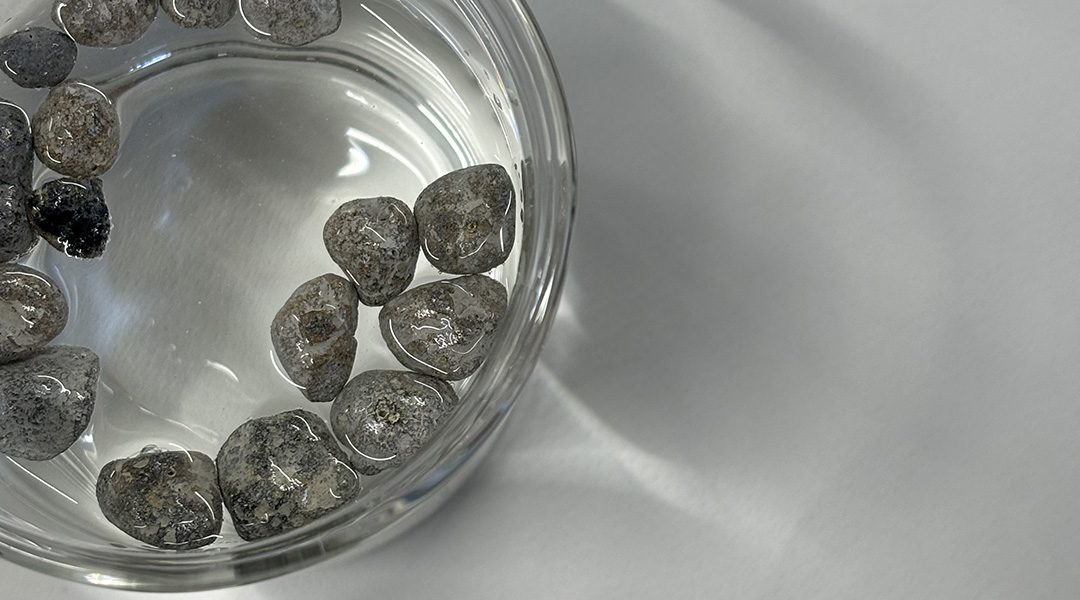Chemists are harnessing energy in sunlight to clean up pollutants from freshwater. In a recent study published in Advanced Sustainable Systems, the team used a process known as photocatalysis, in which energy from light can drive the breakdown of organic molecules, such as dyes and runoff pharmaceuticals.
Employing photocatalysis to decontaminate wastewater is not a new idea. Many common organic pollutants have already been successfully broken down using this method. However, its large-scale application still faces considerable obstacles.
Sustainable solutions for water purification
The current study is part of an effort to create an accessible solution to clean up water in developing countries and remote regions. In doing so, they hope to tackle the pressing issue of limited, drinkable water, as well as the need to decontaminate and reuse wastewater.
“Finding a simple, cost-effective, and universally accessible method for applying photocatalysis in water purification, especially in communities with limited access to clean water, remains an ongoing challenge,” said Claudia Bianchi, professor of industrial chemistry at the University of Milan and one of the study’s lead scientists.
Bianchi is referring to the difficulty in designing an effective tool to remove pollutants while ensuring that the photocatalyst can be reused, is biodegradable, and does not cause undesired side reactions that are also potentially harmful for the environment — all of which are still unresolved problems.
There is an urgent need to provide sustainable solutions for water purification, emphasized Mohtaram Danish, a postdoctoral researcher at Kyungpook National University, South Korea. Though not involved in the current study, similar to Bianchi and her team, Danish specializes in developing photocatalysts to address challenges associated with wastewater treatment.
“Developing solutions for water cleanup and detoxification is crucial for safeguarding public health, preserving ecosystems, conserving resources, promoting socioeconomic development, and building resilience against climate change-induced challenges,” he said.
A floating catalyst
Previous attempts to apply photocatalysis to wastewater treatment added catalysts in powder form, but this makes them difficult to collect afterward. “The use of materials in powder form remains limited from a practical viewpoint due to the difficult separation and/or recovery from the reaction mixture for sustainable reuse,” wrote the team in their paper.
Bianchi and her team came up with a solution in the form of a floating catalyst supported by porous beads of clay, which are light enough to stay on top of the water’s surface and thus can easily be removed after use. The clay is chemically inert, meaning it does not react with other materials, and poses no danger to aquatic ecosystems.
For their photocatalyst, the team grew layers of bismuth oxybromide on the beads’ surface. This material is known to have high photocatalytic activity and is chemically stable, minimizing the risk that it would breakdown itself and provide another source of contamination.
“Sunlight strikes the surface of bismuth oxybromide, energizing electrons to move from the valence band to the conduction band, thereby creating electron-hole pairs,” explained Bianchi.
In simple terms this means that light excites electrons in the photocatalyst, which then move towards the outer layer of the material where they are available to react with carbon-containing molecules to break them down. “These [electron] pairs then facilitate the breakdown of organic pollutants into carbon dioxide and water,” added Bianchi.
Testing the breakdown of common pollutants
The chemists tested their approach in bowls of tap water containing two commonly used drugs, diclofenac and ibuprofen, and exposed them to the Sun together with the floating catalyst. Diclofenac was completely removed from water samples, even after rinsing and reusing the floating devices several times.
The degradation of ibuprofen, on the other hand, was less efficient, especially when the catalyst was reused. This could be due to intermediates formed during the degradation of diclofenac that may be sticking to the floating particles and could thereby reduce the catalyst’s ability to breakdown ibuprofen — a hypothesis the chemists say they are now investigating.
“We are currently extending our research to evaluate the device’s capability in also addressing other organic contaminants, including dyes and polyphenols, whether individually or in mixtures, commonly found in natural water bodies,” Bianchi added.
There are other potential limitations to the approach, Danish cautioned. These include the catalyst’s dependence on sunlight, which, while desirable as a free and clean resource, limits its applications in geographical locations with insufficient sunlight throughout the year.
The complex composition of wastewater is another challenge that needs further investigation, as the team tested their approach in samples with just two organic contaminants.
“[However, the study] represents a crucial step toward improving water quality, enhancing public health, and promoting environmental justice for those most in need by bridging the gap between laboratory research and real-world applications,” said Danish.
On a similar note, Bianchi emphasized the core takeaway from their study extends beyond the scientific results. “It serves as a compelling illustration of chemistry’s power to address sustainability challenges through innovative solutions that benefit both humanity and the environment,” she said.
Reference: Melissa Galloni, et al., An Innovative Sunlight-Driven Device for Photocatalytic Drugs Degradation: from laboratory- to real-Scale Application. A First Step Toward Vulnerable Communities, Advanced Sustainable Systems (2024). DOI: 10.1002/adsu.202300565
Feature image credit: Melissa Greta Galloni, et al.

















